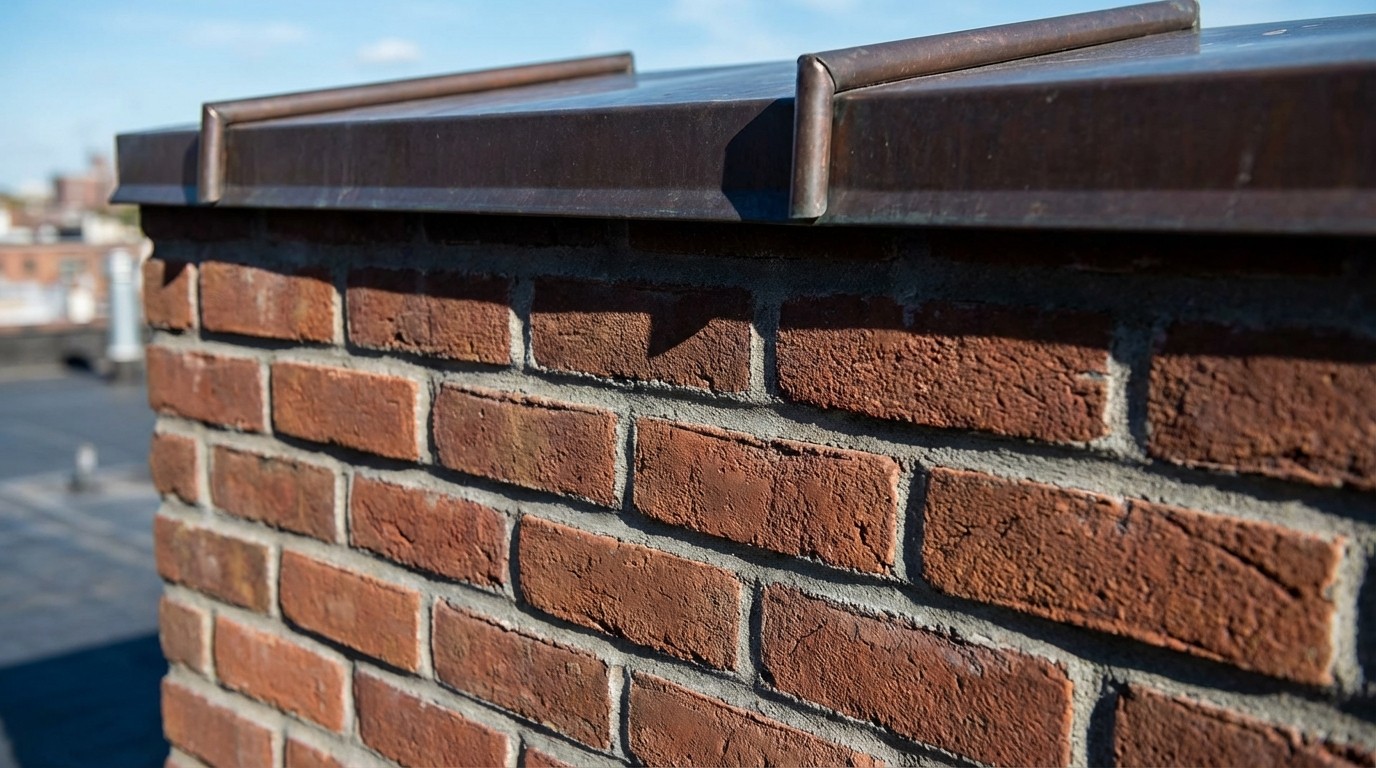PVC roofing is a durable, white plastic membrane that creates a waterproof seal on flat roofs. It's ...
PVC roofing costs $6-12 per square foot and typically lasts 20-30 years, making it a premium choice for homeowners who want long-term durability and minimal maintenance on their flat roof.
What is PVC roofing material
PVC roofing is a single-ply membrane made from vinyl plastic, that's flexible, waterproof, and designed specifically for flat or low-slope roofs. Unlike the asphalt shingles on most homes, PVC comes in large sheets that installers fuse together using heat. The result is one continuous, seamless surface across your entire roof.
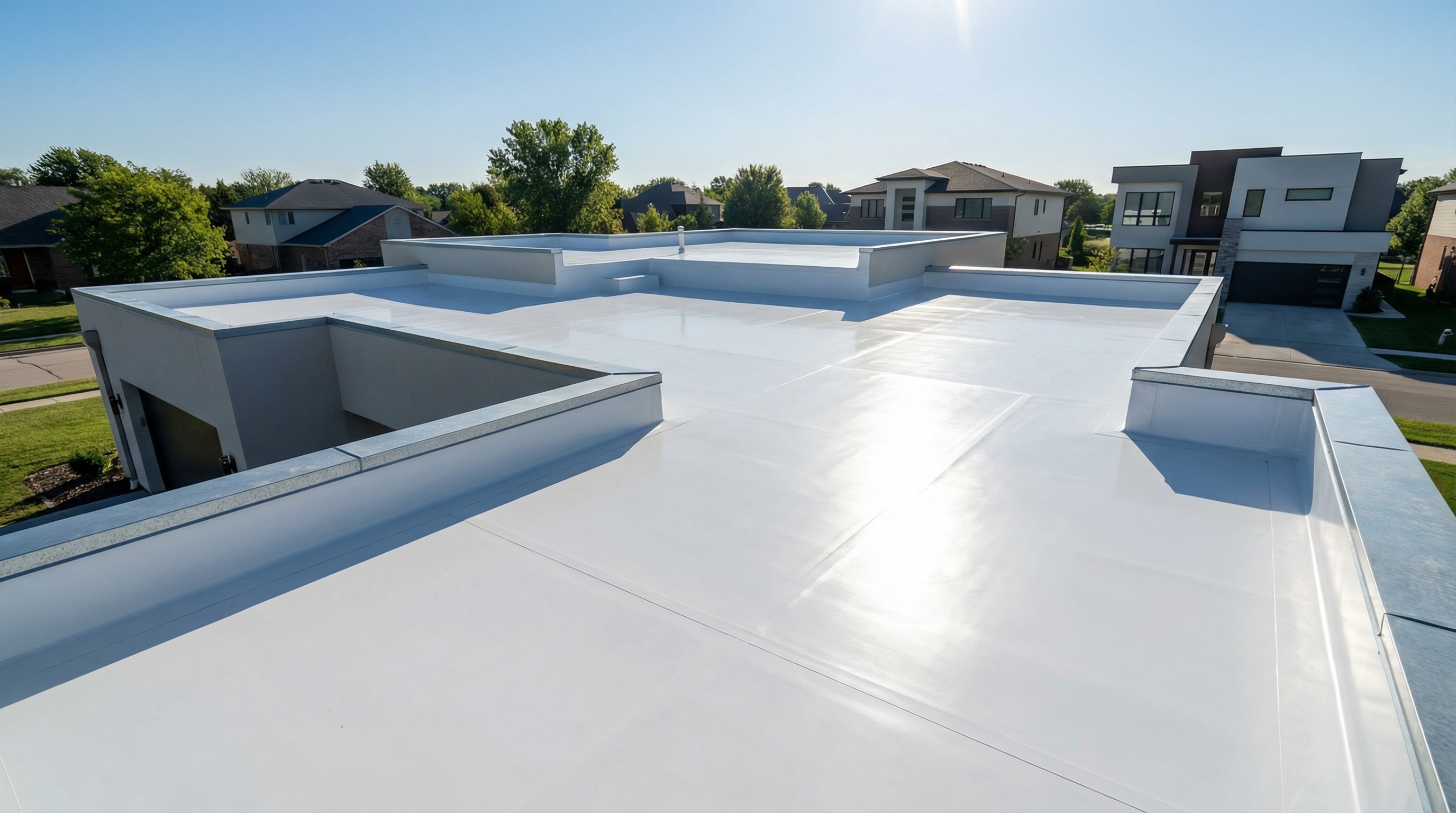
The material itself is typically white or light gray and reinforced with polyester fabric for added strength. Contractors have used PVC on commercial buildings for over 30 years, and it's become increasingly common on residential flat roofs, home additions, and modern designs with flat rooflines.
Here's what a PVC roofing system includes:
The membrane: A flexible vinyl sheet, usually 45 to 80 mils thick (about the thickness of a credit card to twice that thick), reinforced with polyester
Insulation layer: Rigid foam boards installed beneath the membrane for energy efficiency
Attachment system: Either adhesive, mechanical fasteners, or ballast (weighted material) to hold everything in place
Benefits of PVC roof membrane systems
PVC stands out among flat roofing materials because of specific qualities that directly impact how well it protects your home.
Superior waterproofing with heat-welded seams
Seams are where most flat roofs eventually fail. With PVC, installers use hot-air welding guns to fuse the sheets together at temperatures around 900 degrees F. This creates a bond that's actually stronger than the membrane itself, unlike glued seams that can peel apart over time.
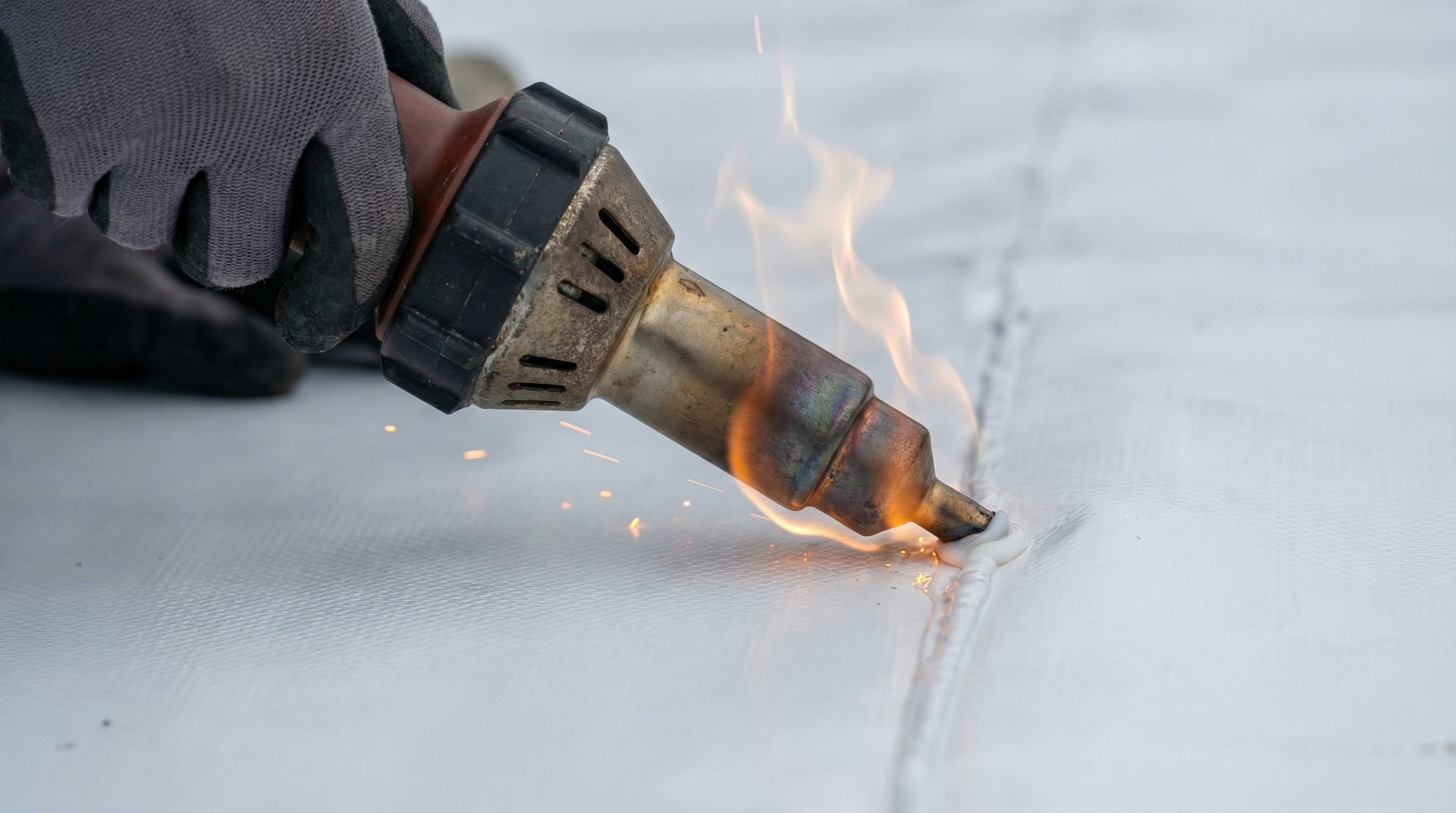
This is different from other flat roofing materials that rely on adhesives or seam tape. Glued seams can peel over time. Welded seams become one piece of material.
Chemical and fire resistance
PVC naturally resists oils, grease, and chemicals that would break down other roofing materials. If you have rooftop HVAC equipment that might leak refrigerant, or if your home is near a restaurant with kitchen exhaust, PVC handles that exposure without degrading.
The material is also inherently fire-resistant. It won't spread flames and doesn't require additional fire-retardant coatings to meet building codes.
Energy efficiency and reflective surface
White PVC reflects sunlight instead of absorbing it. On a hot summer day, a dark roof can reach 150 degrees F or higher, while a white PVC roof might stay around 100 degrees F. That temperature difference means your air conditioning works less hard, which can lower cooling costs noticeably in warmer months.
This reflective property is why PVC roofs are classified as 'cool roofs' in the indu...
Long lifespan with minimal maintenance
A well-installed PVC roof can last 20 to 30 years. Unlike built-up roofs with gravel or tar, there's nothing to shift around or crack over time. Maintenance is straightforward: inspect twice a year, keep drains clear, and remove any debris that collects.
Drawbacks of PVC vinyl roofing
Like all roofing materials, PVC has limitations alongside its benefits. Understanding these drawbacks helps you make an informed decision for your specific situation.
Higher upfront cost
PVC typically costs more than TPO or EPDM per square foot. The material itself is more expensive, and the specialized installation adds to labor costs. For some homeowners, the long-term durability justifies the higher initial price. For others, a less expensive option makes more sense.
Professional installation required
Heat-welding PVC seams requires specialized equipment and training. PVC installation requires professional expertise and specialized equipment that homeowners typically don't have access to. A poorly welded seam will leak, and fixing it later costs more than doing it right the first time. Finding a contractor with specific PVC experience matters.
Cold weather limitations
PVC becomes less flexible in extreme cold, which can make installation tricky when temperatures drop below 40 degrees F. Some PVC formulations handle cold better than others. If you're getting a roof installed in late fall or winter, ask your contractor how they handle cold-weather installation.
Limited aesthetic options
PVC comes primarily in white or light gray. A few manufacturers offer tan or other light colors, but the options are limited compared to shingles or metal roofing. For most flat roof applications, the limited color selection isn't a significant concern since these roofs are typically not visible from ground level.
PVC vs TPO vs EPDM flat roof materials
When you start researching flat roofing, three materials come up repeatedly: PVC, TPO, and EPDM. Each has a place, and the right choice depends on your situation.
Feature | PVC | TPO | EPDM |
|---|---|---|---|
Seam method | Heat-welded | Heat-welded | Adhesive or tape |
Chemical resistance | Excellent | Moderate | Poor |
Color | White/gray | White/tan | Black |
Relative cost | Highest | Mid-range | Lowest |
Track record | 30+ years | 15-20 years | 40+ years |
PVC vinyl membrane
PVC offers the strongest chemical resistance and proven long-term performance. The heat-welded seams create a truly monolithic surface. It's the go-to choice when durability and chemical exposure are priorities.
TPO single-ply roofing
TPO (a flexible plastic membrane) is newer to the market and less expensive than PVC. It also uses heat-welded seams, which is a significant advantage over adhesive-based systems. However, TPO hasn't been around long enough to match PVC's proven track record. Early TPO formulations had some durability issues, though manufacturers have improved the product over time.
EPDM rubber roofing
EPDM (synthetic rubber) is a synthetic rubber membrane and the most affordable flat roofing option. It's been used for over 40 years and has a solid reputation. The main drawback is the seams, which use adhesive or tape rather than welding. Seams are the weak point, and they can separate over time. EPDM is also black, which absorbs heat rather than reflecting it.
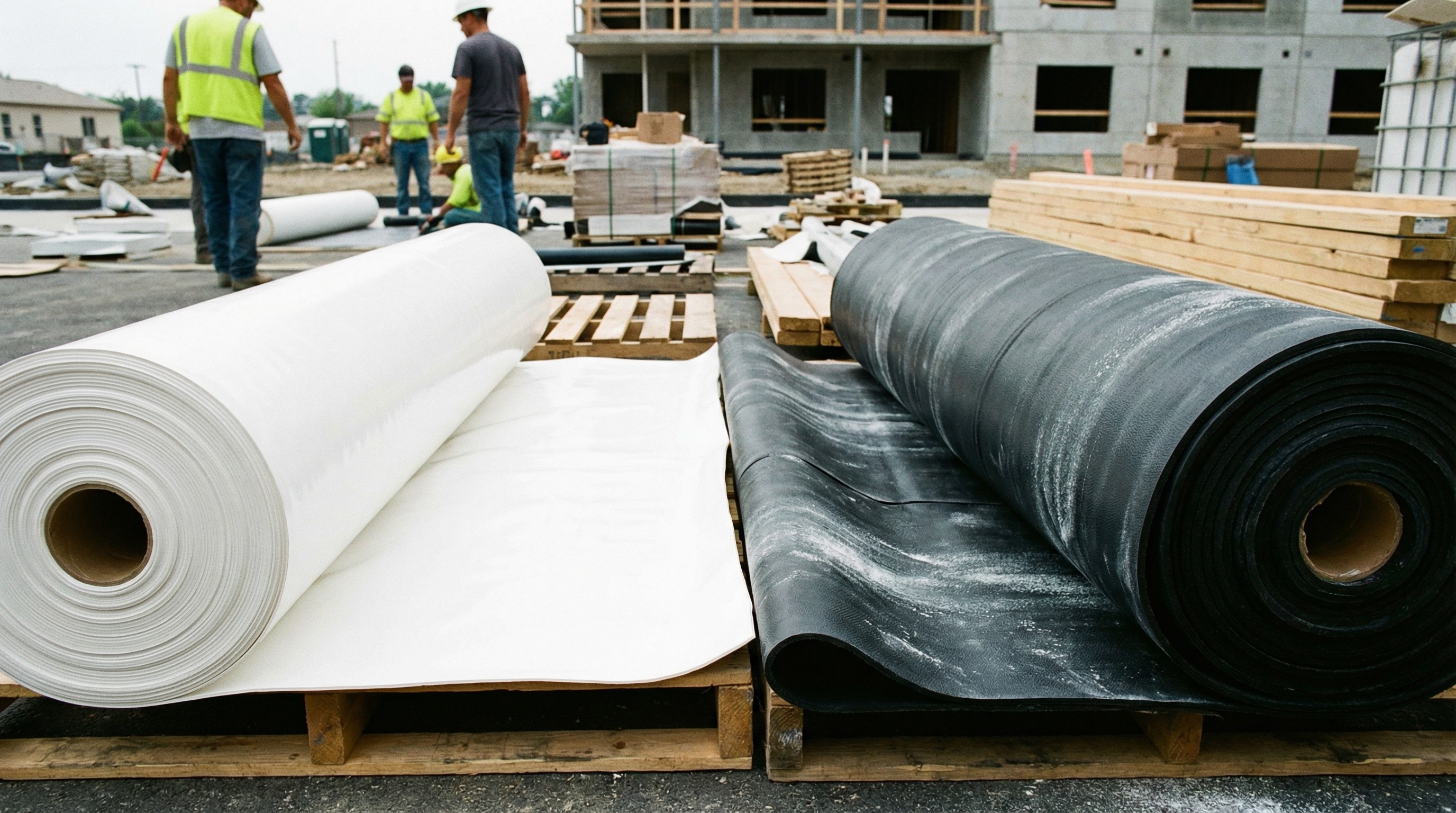
Common PVC roof problems
Knowing what can go wrong helps you catch issues early, when repairs are simpler and cheaper.
Seam separation
Even welded seams can fail if the original installation was poor. Separation usually shows up first at flashing points or roof edges. If caught early, a contractor can re-weld the seam. Left alone, water gets in and causes bigger problems.
Ponding water
Ponding refers to water that sits on the roof for more than 48 hours after rain. Flat roofs aren't perfectly flat; they have a slight slope to direct water toward drains. If water pools and stays, it usually means the slope is off or drains are clogged. Ponding accelerates wear on any membrane.
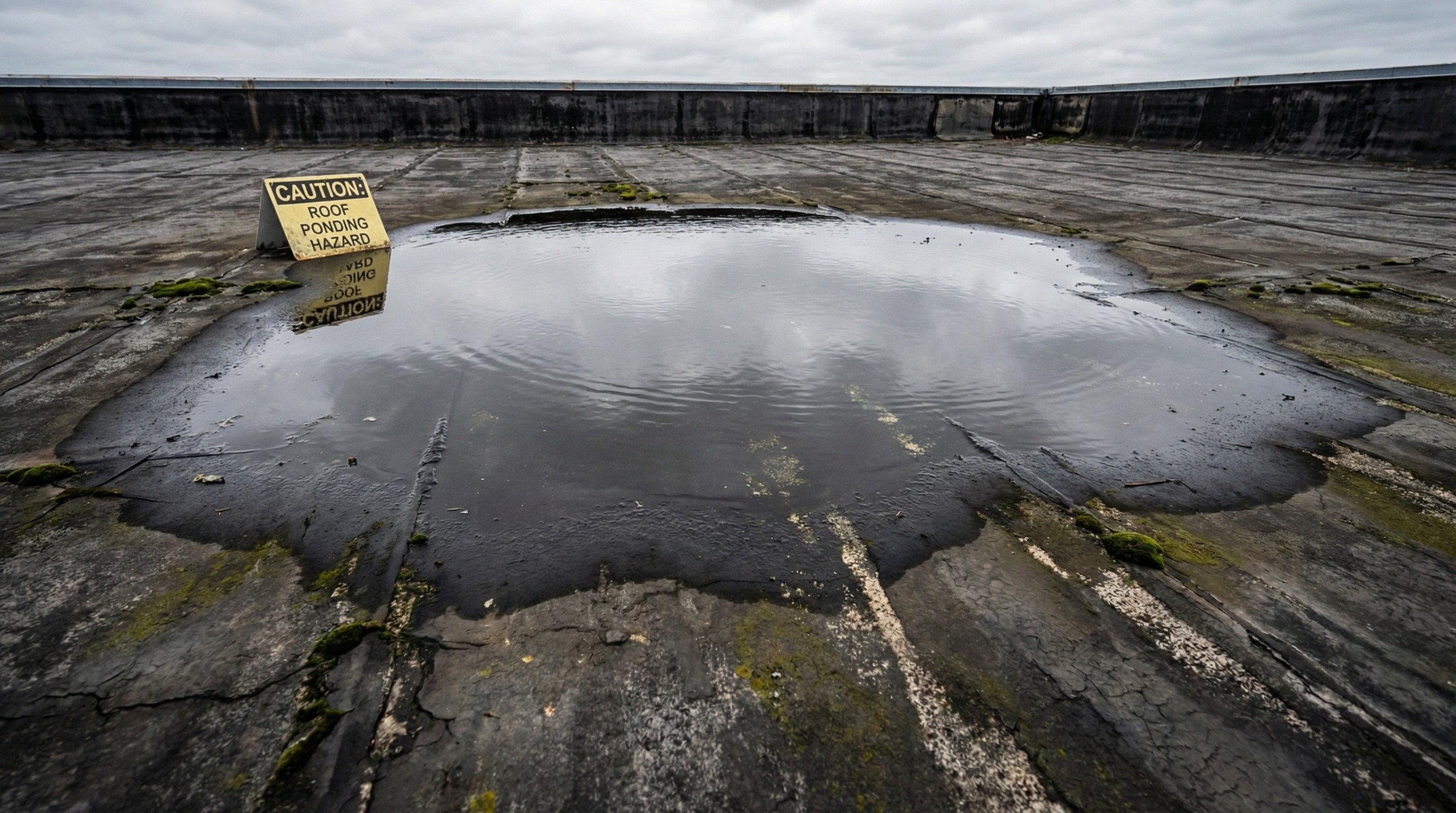
Punctures and tears
PVC is durable, but it can be punctured by dropped tools, heavy foot traffic, or debris. Walk pads (protective mats) around rooftop equipment help prevent damage in high-traffic areas. Limiting unnecessary roof access also helps.
Loss of flexibility over time
PVC contains chemicals that keep it flexible. Over many years, these chemicals can gradually leave the material, making it more brittle. Higher-quality PVC formulations resist this better than cheaper alternatives. Proper installation and avoiding incompatible materials (like certain types of insulation) also reduces the risk.
How much does PVC flat roofing cost
PVC roofing typically runs between $6 and $12 per square foot installed. A 1,500-square-foot flat roof might cost $9,000 for a basic installation or up to $18,000 with premium materials, full tear-off, and complex details.
Several factors affect where your project falls in that range:
Roof size and access: Larger roofs cost more total but often less per square foot. Difficult access (like a third-story roof) increases labor.
Tear-off vs. overlay: Removing the old roof before installing new material adds cost but is sometimes required by code or condition.
Insulation: Adding or upgrading insulation increases the project cost but improves energy efficiency.
Penetrations and details: Every vent, skylight, or pipe that goes through the roof requires custom flashing work, which adds labor.
Getting multiple quotes from different contractors helps you see what's fair for you...
PVC roofing installation methods
Contractors attach PVC membranes in three main ways. The right method depends on your roof structure, local wind conditions, and budget.
Fully adhered systems
The membrane is glued directly to the insulation or roof deck using adhesive. This creates a smooth, tight surface with no loose areas. Fully adhered systems perform well in high-wind areas because there's no space for wind to get underneath. The tradeoff is more labor and higher cost.
Mechanically attached systems
The membrane is fastened to the roof deck with metal plates and screws. Installers then weld the next sheet over the fasteners, hiding them and creating a watertight seal. Mechanical attachment is faster and less expensive than full adhesion. It works well for most residential and commercial applications.
Ballasted systems
The membrane is laid loose over the roof and held in place by heavy material, usually river rock or concrete pavers. Ballasted systems only work on completely flat roofs with structures strong enough to handle the extra weight. The advantage is easy access for repairs since you can simply move the ballast aside.
Is PVC roofing right for residential flat roofs?
PVC works well for residential flat roofs, though it's less common than on commercial buildings. It's particularly suited for flat sections of homes, room additions, covered porches, and modern architectural designs.
One practical consideration: finding a contractor experienced with residential PVC installation may take more effort in some areas. Commercial roofers often have more PVC experience, so asking about a contractor's residential flat roof portfolio is worthwhile.
For small flat sections, like a porch roof or a single-story addition, PVC's durability and low maintenance often make sense. For larger residential flat roofs, the higher upfront cost compared to TPO or EPDM is worth weighing against the long-term benefits.
How long does a PVC roof last?
A properly installed PVC roof typically lasts 20 to 30 years. Installation quality is the biggest factor in longevity, followed by climate and maintenance habits.
You'll receive two warranties with a PVC roof: a manufacturer's material warranty and a contractor's workmanship warranty. Material warranties often run 15 to 20 years, while workmanship warranties vary widely by contractor. Understanding the specific terms of both warranties-including what's covered and what actions might void coverage-is essential before making your final decision.
How to compare PVC roofing quotes
When you're gathering estimates, look for quotes that break down costs clearly. Lump-sum quotes make it difficult to understand what you're actually paying for and can hide important cost variations. Line-item quotes show exactly what you're paying for and make it easier to compare contractors fairly.
Key details to look for:
Material specifications: The brand and thickness (measured in mils) of the membrane
Installation method: Adhered, mechanically attached, or ballasted
Warranty terms: Both manufacturer and workmanship warranty length and coverage
Inclusions: Whether tear-off, disposal, insulation, flashing, and permits are included or extra




